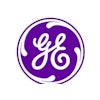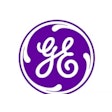 Vincent Chan.
Vincent Chan.
The topic of AI will once again be infused throughout sessions and on display in the exhibitor hall at this year’s RSNA scientific assembly and annual meeting. The need for imaging modalities to support an earlier, more accurate diagnosis continues to drive AI applications in the medical imaging market.
In fact, the size of the market for AI in medical imaging is experiencing phenomenal growth, expected to increase from $1.12 billion in 2022 to $27.52 billion by 2029, according to Maximize Market Research, a global healthcare market research firm. While more transformational change is coming, I would like to highlight three areas where AI is making a visible impact today.
Patient positioning
AI-based tools with varying degrees of automation and intelligence are enhancing medical imaging workflows including patient positioning. At RSNA 2023, look for AI-driven systems that radiographers can use to help make patient positioning faster and more precise, and bring consistency to the process, all of which help improve image quality and reduce the need for retakes.
Positioning is a time-intensive step in the image capture process. Even the most skilled radiographers can fail to get positioning just right. Then after getting the patient in the exact position, it is not unusual for a patient to move in the time it takes the radiographer to return to the console. Sometimes the slight change in position is unnoticed, resulting in the need for a retake, adding even more time to the image capture process.
Today sensors, cameras, and AI software all work together to automatically adjust equipment for each patient and exam, and alert the radiographer if the patient has moved so that corrective action can be taken. These smart capabilities enable the radiographer to correct positioning errors prior to imaging.
Image quality
AI and other algorithms also are improving image quality, which, in turn helps enhance diagnosis and improve treatment planning. One notable AI outcome is advanced visualization techniques, also known as companion views, wherein images are processed for a specific interpretation task. Algorithms use sophisticated image analysis, multifrequency enhancements, and grayscale transformations to accentuate features of interest such as edges, lines, and fine textures. Examples of applications for advanced visualization include helping to locate tube and line tips or enhancing the appearance of a pneumothorax or collapsed lung, helping the physician see the area of interest more clearly.
Another image processing advancement that is rooted in AI helps balance noise and dose in images. These two factors are intertwined: the more an image is sharpened, the more noise is enhanced, which is not a good outcome. At RSNA, attendees will see AI technology that reduces image noise while retaining fine spatial detail. Notably clearer images are produced, and a better contrast-to-noise ratio is achieved at a broad range of exposures. This technological breakthrough is especially beneficial for the high-contrast detail necessary for musculoskeletal (MSK) imaging. The ability to lower radiation doses without a loss in image quality also has considerable benefits in neonatal and pediatric imaging where imaging at the lowest possible dose is critical.
Improving the patient experience
The AI advances in patient positioning will have an additional important outcome: improving the patient experience. Patients undergoing a medical imaging exam are often worried, in pain, or both. Radiographers who spend less time on positioning the equipment are free to spend an added moment or two to reassure patients. Additionally, a speedier workflow gives patients added confidence that they are in the care of a competent radiographer.
The other side of the human experience is radiographers. Systems and technology displayed at RSNA will demonstrate how AI-based tools give them added confidence that they are capturing the best image possible and advancing the patient’s care. Using AI in the medical imaging process also frees up radiographers to focus on one of the more meaningful parts of their profession: interacting with patients.
Leaders in industries outside of healthcare regularly paint AI as being as significant as the Industrial Revolution in terms of economic impact, productivity, innovation, and overall impact on quality of life. In healthcare, it has the potential to improve diagnostic and treatment processes. While medical imaging providers continue to look toward the future, RSNA attendees can embrace existing AI radiology solutions that are helping to improve clinical outcomes and enhance the imaging experience for patients and radiographers today.
Vincent Chan is president and general manager of digital radiography at Carestream.
The comments and observations expressed are those of the author and do not necessarily reflect the opinions of AuntMinnie.com.



















